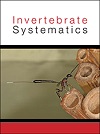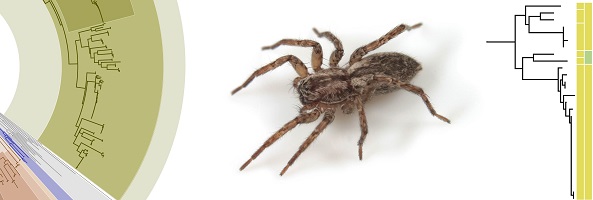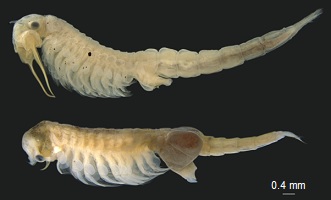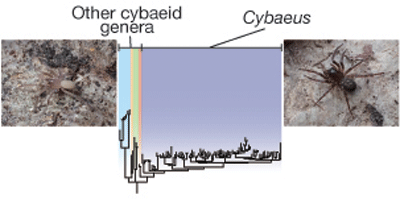Taxonomic identification of spider species from morphological structures has limitations in cases of closely related species or intraspecific variability. We investigate the utility of genetic barcoding with the mitochondrial marker cytochrome c oxidase I (COI) in ghost spiders of the subfamily Amaurobioidinae. Most discrepancies between DNA barcoding and morphological identification are explained by low geographic sampling or by geographically structured lineages. In addition, we show that the marker COI is phylogenetically informative for deeper nodes in the tree. (Image credit: Martín Ramírez.)

Invertebrate Systematics
Volume 38 Number 11 2024
The brine shrimp Parartemia is a diverse, salt-tolerant genus found in Australian salt lakes. Its current taxonomy is mainly based on morphological data. We used molecular data to investigate the number and relationships of Parartemia species and found two new morphospecies and three cryptic species. Although most species were valid, molecular divergence among and within some species was substantial. Our results confirm the species richness of the genus and our updated species list will aid in targeted conservation efforts. (Image credit: Md Aminul Islam.)
IS24044 Abstract | IS24044 Full Text | IS24044PDF (4 MB) | IS24044Supplementary Material (1.6 MB) Open Access Article
The epigean and subterranean spider genus Cybaeus is highly species rich in the Japanese Archipelago. The Japanese Cybaeus spiders are classified into ~100 species, but their phylogeny is unclear. We conducted molecular phylogenetic analyses and divergence time estimation based on 73 species and demonstrated that several Cybaeus species should be classified into other genera. Divergence dating suggested that the opening of the Sea of Japan c. 20 million years ago may have promoted diversification and speciation of Japanese cybaeids. (Image credit: Yoh Ihara and Takafumi Nakano.)







